Early Career Scientist Spotlight
Dr. Denny Oliveira (he/him/his)
Space Physicist
Geospace Physics Laboratory (673)
Did you always know that you wanted to be a space physicist?
Not at all. Although I knew in high school that I was interested in physics, it wasn’t until my undergraduate degree that I started to dream of a career in physics research. After I graduated, I expanded my studies and pursued an M.S. in Theoretical Physics to study quantum electrodynamics. My thesis work was a theoretical study of how some “artificial” terms introduced in standard equations break some fundamental and well-established symmetries of nature (such as conservation of energy and electric charge) that could eventually be detected experimentally. Since this study was so specific and very unlikely to be experimentally probed, I decided to switch my research interests from theoretical to experimental physics. I was searching for a Ph.D. position in Brazil when I received an invitation to go to the University of New Hampshire (UNH) to pursue a Ph.D. in Physics with a focus on experimental physics. With the full support of my wife, Patricia, and with two little daughters, Isabela and Eduarda, I took on the challenge.
When I arrived at UNH, I quickly realized the existence of a very exciting field of research known as space physics. In my second semester, I took a course titled “Introduction to Research”, where UNH researchers and professors would give presentations about their work and research interests. My Ph.D. advisor, Professor Joachim “Jimmy” Raeder, presented his numerical model and explained how the model can be applied to space physics investigations. I became interested in his research and, later, we agreed I would be his Ph.D. student. Then I started to take graduate classes related to space physics, namely Introduction to Space Physics, Magnetohydrodynamics (MHD), Plasma Physics, and Earth’s Magnetospheric Physics. Given my strong background in theoretical physics (including electrodynamics, statistical physics, and classical mechanics) that I brought with me from Brazil, I quickly absorbed the new concepts and caught up with cutting-edge research in space physics. My first paper as a space physicist was entirely focused on MHD numerical simulations, and the following two papers I published involved analyses of experimental data. As a graduate student, I had many opportunities to travel to scientific workshops and conferences, as well as very important and useful summer schools, and I am very grateful to Patricia for encouraging me to go and for watching the girls while I was gone.
When I was about to finish my Ph.D. studies, I accepted a research position to work at NASA Goddard Space Flight Center (GSFC). I started out studying the upper atmosphere dynamics during magnetic storms, with Dr. Eftyhia Zesta, by analyzing atmosphere density data provided by low-Earth orbit (LEO) satellites (300-600 km). Since then, I have been involved in many projects with NASA scientists and many researchers from other agencies and universities across the U.S. and around the world.
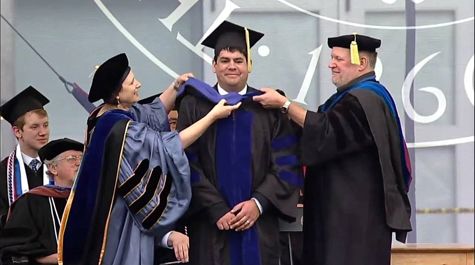
Credit: University of New Hampshire Graduate School
What is your research focus?
My research is basically divided in two areas. The first topic of my research consists of studying how transient solar perturbations impact the magnetosphere. These perturbations are called “interplanetary shocks” and they are, in fact, shock waves that propagate in space. I am interested in a specific type of wave that steepens in space before impacting Earth, similar to how waves at the beach break and transport matter (e.g., a boat or a surfing board) onto the shore. Such shocks compress the magnetosphere after impacting it, enhancing electric currents that disrupt the Earth’s magnetic field everywhere. I’m particularly interested in the angle at which such waves impact the magnetosphere; I have found that the more frontal the impact, the higher the geomagnetic activity there is following the impact. The results of this research can help space weather forecasters because they can pay closer attention to shocks that will hit the Earth’s magnetosphere more frontally.
The second topic of my research is the study of upper atmosphere dynamics during magnetic storms. During magnetic storms, magnetospheric energy enters the upper atmosphere at high latitudes heating the local molecules there. Then, the upper atmosphere expands upwards increasing the atmospheric density at higher altitudes. As a result, satellites flying in these higher regions face enhanced drag forces due to the augmented number of molecules. These enhanced drag forces can be detrimental to satellite missions because such forces decrease the satellites’ lifetimes and introduce errors in orbital tracking and predictions. My research focuses on studying drag effects caused by magnetic storms with different intensities, especially the most extreme ones; however, even moderate events can impact satellites, as demonstrated by the loss of ~40 satellites by SpaceX during a mild event in February 2022. I use different data analysis techniques, including machine learning and data assimilation, for understanding the dynamics of the upper atmosphere in order to improve the performance of current upper atmosphere models and enhance future orbital drag predictions.
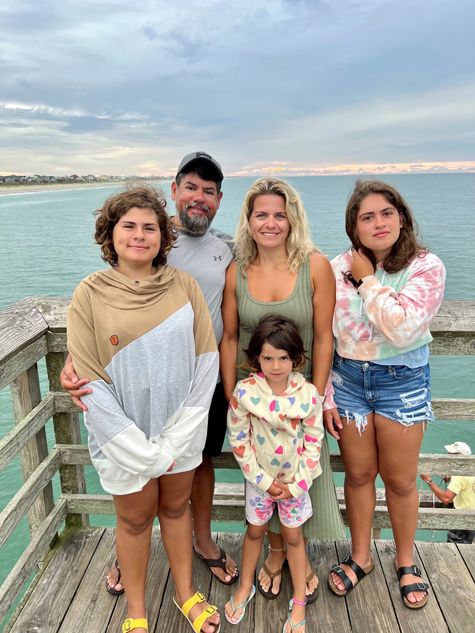
Credit: Unknown beach-goer
What was your first big achievement?
My Ph.D. work, without a doubt, was my first big achievement. During my Master’s in Brazil, I was involved in a project that focused on a general science question with little prospects of experimental confirmation. In my Ph.D. studies, I was able to tackle a specific science question that was addressed with numerical simulations. More specifically, I predicted with simulations that shock waves impacting the magnetosphere more frontally will be followed by higher geomagnetic activity (auroral precipitation, geomagnetic field variations, and electric current enhancements, among others). These results produced a paper. Later, I analyzed data provided by hundreds of magnetometers worldwide to test my predictions experimentally. Data showed that, indeed, waves that are more frontal produced higher ground magnetic field variations and auroral activity. These results produced two more papers and closed a Ph.D. thesis. However, this work did not stop there. I have carried on the work on this topic, and I have collaborated with many researchers in the U.S. and around the world and published many papers (see recent review). I am currently the Principal Investigator (PI) of a project and a Co-Investigator (Co-I) of another one to study how these shock impact angles affect magnetic field response on the ground in North America and in the geospace.
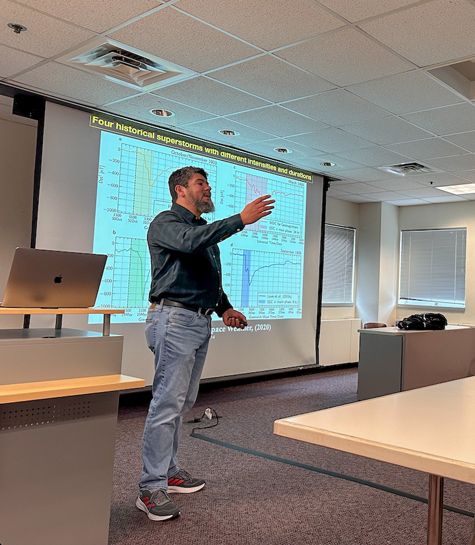
Credit: Hyomin Kim
Are you involved in any upcoming space satellite missions?
I am currently involved in the GDC (Geospace Dynamics Constellation) mission, a NASA LWS (Living With a Star) mission that will fly in Earth’s upper atmosphere at altitudes 300-400 km. GDC will study how solar energy, magnetospheric energy, and tidal winds coming from lower altitudes will couple with one another to drive a complex and dynamic behavior that will be studied in small scales like never before. GDC will consist of six satellites carrying five different instruments that will measure the energy input and the nearly immediate local atmospheric response by another satellite flying right behind. I am a Co-I for the two instruments that will measure the energy input for the GDC mission. One instrument is named CAPE (Comprehensive Auroral Precipitation Experiment) and will measure highly energetic particles, and the other one is NEMISIS (Near Earth Magnetometer Instrument in a Small Integrated System) which will measure magnetic field variations in space. The magnetic field variations measured by NEMISIS will be used for determining magnetospheric energy input. GDC is scheduled to be launched in 2027. I am very excited about this mission because it will certainly revolutionize our understanding of the upper atmosphere dynamics.
What do you enjoy the most about your job?
I really enjoy taking on a project and performing data analyses in order to answer scientific questions related to the project. Another aspect I really enjoy about my job is communicating my results, both in writing and speaking. I like to write scientific papers and submit them for publication because, in the future, anyone interested can access my work. I also enjoy going to conferences and giving presentations of ongoing research because I often receive many ideas and suggestions from my peers that will certainly improve my work.
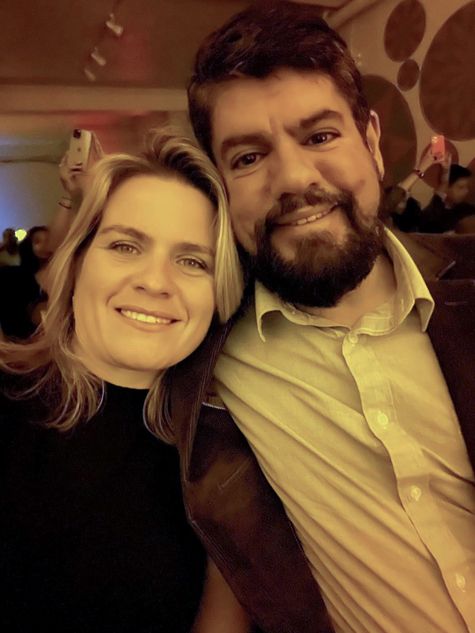
Credit: Patricia Magnoni
What is one thing you wish the public understood about your particular field of science?
Space weather refers to the conditions in space that can affect Earth and its technological systems. Space weather is important for modern human life because it can have a significant impact on our technology and infrastructure. For example, a strong geomagnetic storm can cause power outages, disrupt satellite communications, and damage electrical grids. This can lead to significant economic losses and even pose a threat to public safety. For this reason, I think the general public should know more about space weather because conditions in space can affect everyone’s life in many ways.
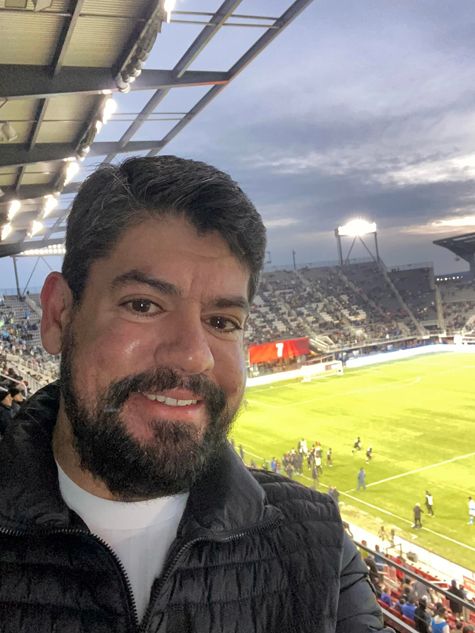
Credit: Jim Spann
What do you like to do in your free time?
Since I grew up in South America, soccer is my biggest hobby. I used to play soccer a lot in high school and in college in Brazil, but now I just watch soccer games and try to keep up with results when possible. Sometimes I go to Washington D.C. to watch D.C. United games.
I love to take care of my family during my free time. Driving to soccer and softball games, ballet, swimming practices and meets, and Girl Scout meetings are some of the top activities. I also like to go to a local pool with my wife and daughters during summer. I really enjoy going to the beach, camping, and hiking in the mountains on vacations with my family. I really enjoy sharing this parenting job with Patricia, who is a great mother and partner. She truly inspires me in everything I do in life, from being a scientist to being a father.
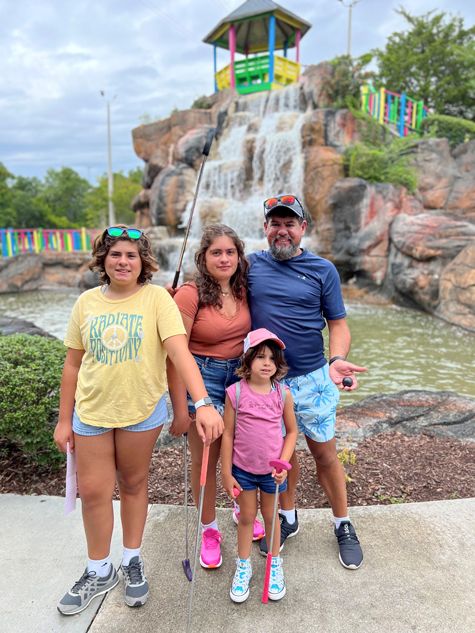
Credit: Patricia Magnoni
Biography
Home Town:
São Paulo, Brazil
Undergraduate Degree:
B.S. in Physics, University of São Paulo, Brazil
Post-graduate Degrees:
M.S. in Theoretical Physics, University of São Paulo, Brazil
Ph.D. in Physics, University of New Hampshire, NH, United States
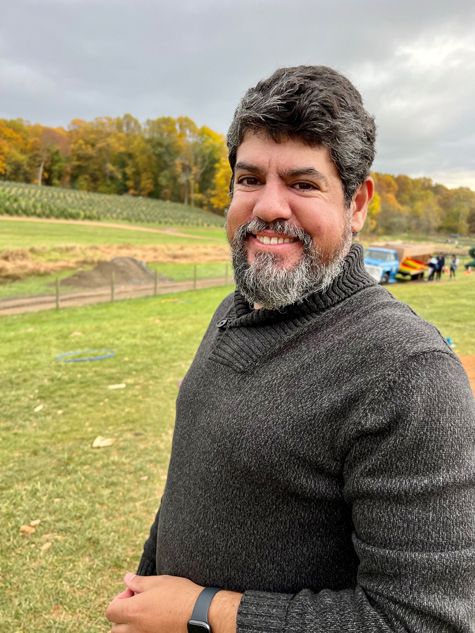
Link to Dr. Oliveira's GSFC Bio
